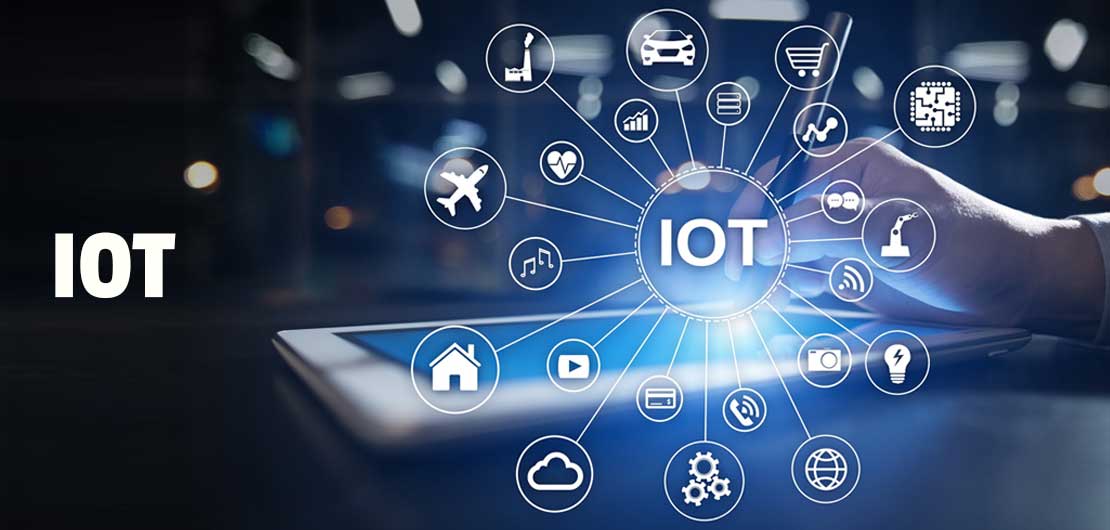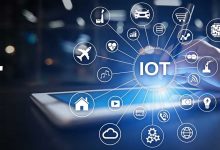IoT App Development

Index Of The Blog
IoT, or the Internet of Things, refers to a network of physical devices, vehicles, home appliances, and other objects embedded with sensors, software, and connectivity to enable them to collect and exchange data. An IoT app is a software application that allows users to control and manage their IoT-enabled devices through a smartphone, tablet, or other mobile device.
IoT apps are essential for the effective management of IoT devices as they enable users to remotely control and monitor the devices from anywhere in the world. IoT apps can also help users to automate routine tasks and improve their overall quality of life by enabling the devices to interact with each other and make decisions based on the data collected.
Internet of Things apps can be developed for a wide range of applications, including home automation, healthcare, transportation, industrial automation, and smart cities. They can also be used in agriculture, environmental monitoring, energy management, and many other areas.
IoT app development requires specialized skills and expertise in areas such as hardware compatibility, cloud integration, security, data analytics, and user interface design. As the use of IoT devices continues to grow, the demand for skilled IoT app developers is expected to increase in the coming years.
Difficulties in IoT App Development
IoT app development poses several challenges that developers must overcome. Here are some of the most common difficulties:
Developing IoT apps can present several challenges, including:
- Hardware Compatibility: IoT devices come in different sizes, shapes, and capabilities. Ensuring compatibility between devices and software can be challenging, especially if the devices are from different manufacturers.
- Security: IoT devices are vulnerable to security breaches, and developing secure IoT apps requires specialized expertise in encryption, authentication, and access control.
- Scalability: IoT devices generate massive amounts of data, which can strain network bandwidth and processing power. Developing IoT apps that can handle large volumes of data and scale with the growth of the IoT network can be challenging.
- Connectivity: IoT devices rely on internet connectivity to communicate with each other and with the cloud. Developing IoT apps that can maintain connectivity even in areas with weak or intermittent network coverage can be challenging.
- User Interface: IoT devices can be complex and difficult to use, especially for non-technical users. Developing IoT apps with intuitive user interfaces that are easy to use and understand can be challenging.
- Data Analytics: IoT devices generate vast amounts of data, which can be challenging to analyze and make sense of. Developing IoT apps that can analyze data in real-time, identify patterns and insights, and make data-driven decisions can be challenging.
Overall, developing IoT apps requires specialized skills and expertise in several areas, including hardware compatibility, security, scalability, connectivity, user interface design, and data analytics. Meeting these challenges requires collaboration between hardware manufacturers, software developers, and data analysts to create effective and secure IoT solutions.
Methods of IoT App Development
Developing IoT apps requires a structured and systematic approach that involves several steps, including:
- Identify the Business Problem: The first step in developing an IoT app is to identify the business problem the app will solve. This involves understanding the user requirements, the IoT devices involved, and the expected outcomes.
- 2. Plan and Design: Once the business problem has been identified, the next step is to plan and design the app. This involves selecting the appropriate hardware and software components, designing the user interface, and defining the data analytics requirements.
- 3. Develop and Test: The next step is to develop and test the app. This involves writing the code, integrating the hardware and software components, and testing the app for functionality and performance.
- 4. Deploy and Monitor: Once the app has been developed and tested, it is deployed to the production environment. This involves configuring the app for deployment, installing the app on the IoT devices, and monitoring the app for performance and security.
- 5. Update and Maintain: IoT apps require ongoing updates and maintenance to ensure that they continue to function correctly and securely. This involves monitoring the app for issues, performing periodic updates, and addressing any security vulnerabilities.
The above steps can be executed using various software development methodologies, such as the Agile development process or the Waterfall model. The choice of methodology will depend on the project requirements, team size, and timeline. It’s important to select the right methodology that suits the project and provides optimal results. Additionally, IoT app development may require the use of specialized tools and frameworks, such as IoT platforms, cloud services, and data analytics tools, to ensure optimal performance and security.
Conclusion
IoT app development has several effects on various industries, including increased efficiency, cost savings, improved customer experience, data analytics, and improved safety and security. However, IoT app development poses several challenges, including hardware compatibility, security, data management, connectivity, and user interface. Developers can overcome these challenges by using methods such as device compatibility, cloud integration, security, data analytics, and user interface design. Overall, IoT app development requires a unique approach that considers the complexities of IoT devices and their associated technologies.

